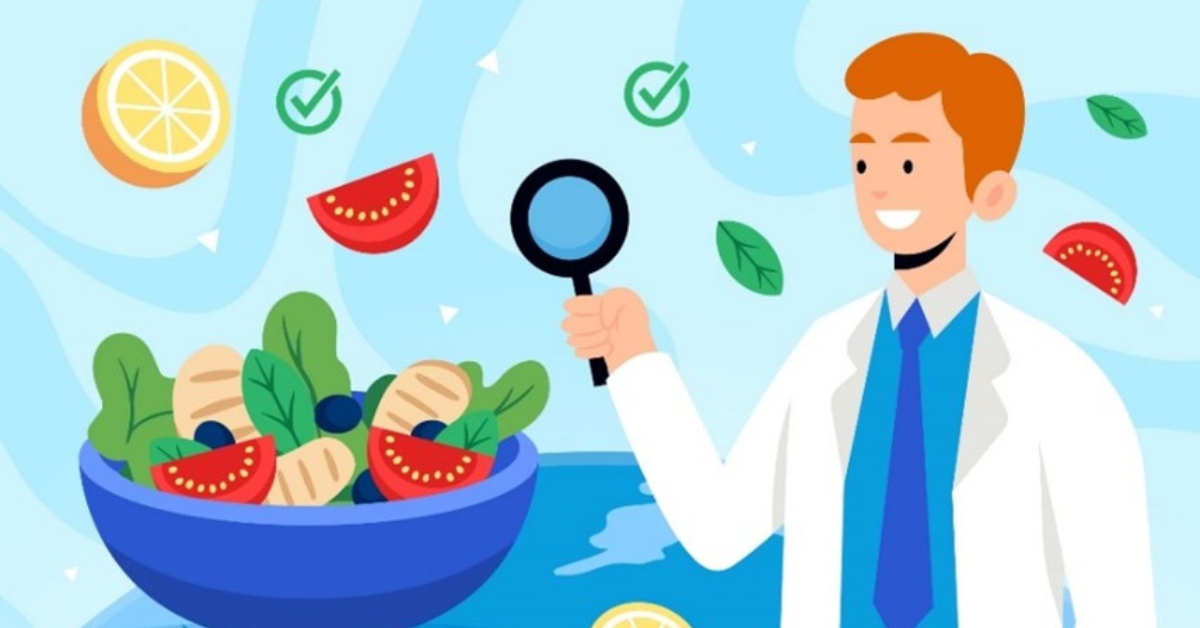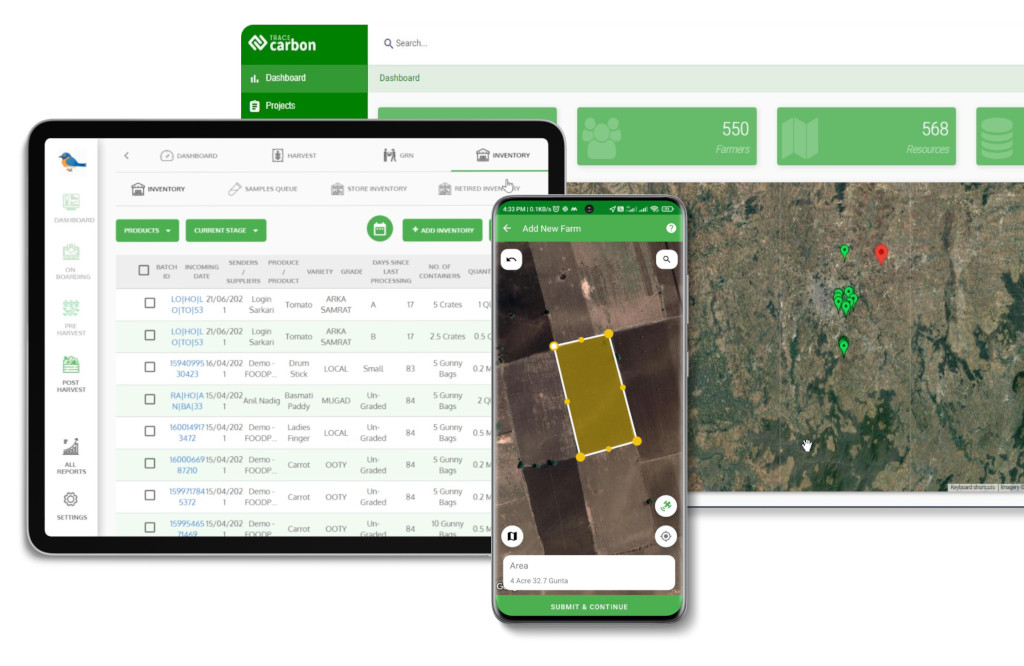Contact: +91 99725 24322 |
Menu
Menu
Quick summary: Discover six best practices for implementing a robust food traceability system. Enhance transparency, safety, and compliance in your supply chain while building trust with consumers. Learn how to leverage technology, standardize processes, and foster collaboration for effective traceability from farm to fork.

“One broken link in your supply chain can lead to lost trust, wasted product, or worse — regulatory penalties.” Whether you’re managing a cocoa farm collective, a dairy export line, or sourcing ingredients across borders, your food traceability system is no longer a “nice to have.” It’s a business-critical tool for maintaining brand credibility, meeting evolving regulations like FSMA 204 and EUDR, and staying ahead of costly recalls or rejections.
The challenge? Many companies are still using fragmented spreadsheets, siloed supplier data, or paper logs that don’t hold up under audit or crisis. Without traceability, you’re flying blind — and that’s risky in a world where one contaminated batch or unverifiable origin story can derail months of operations.
In this post, you’ll discover 6 best practices to build or upgrade a food traceability system that’s scalable, audit-ready, and future-proof — whether you’re just getting started or looking to optimize across multiple tiers.
Key Takeaways
Think of a food traceability system like the “Where’s it been?” detective of your supply chain. It tracks every step your food product takes — from the farm where the tomato was grown to the plate where it’s served. It’s not just about location — it’s about proof, timing, handling, and safety. It’s a frontline defense for your brand, your buyers, and your bottom line.
A good system connects these dots:
Some still rely on manual logs and spreadsheets — which work fine until they don’t. Others go digital-first, with mobile apps, QR codes, blockchain validation, and ERP integration. The best systems don’t just track — they tell a story you can trust.

Traceability is crucial for food safety, quality control and sustainability in the food industry. Traceability practices help companies to manage food safety risks, improve supply chain efficiency and build consumer trust.
Imagine standing in front of a grocery shelf, holding a chocolate bar, and wondering — Where did this really come from? For consumers, it’s curiosity. For companies like yours, it’s an audit question, a market access challenge, and a brand trust issue.
That’s where end-to-end traceability comes in. It’s not just about tracking the final product — it’s about connecting the dots from seed to shipment, from farm to fork. It means you can trace every input (seeds, fertilizers, water), every process (harvest, packing, storage), and every output (batches, products, shipments) in one continuous digital trail.
Most food businesses today still rely on a patchwork of spreadsheets, phone calls, and disconnected tools. One team logs input data on paper, another uses WhatsApp for harvest reports, and quality records sit in someone’s inbox.
Here’s what happens when systems don’t talk to each other:
And worst of all — you lose control over your supply chain story.
Let’s say you’re exporting spices, cocoa, or fruit puree. With a digital traceability platform like TraceX, you get:
All of it centralized. All of it live. No spreadsheets. No chasing.
The goal isn’t just “being traceable.” It’s to move faster, prove compliance, build buyer trust, and respond instantly when something goes wrong (or right). Whether you’re answering a retailer’s traceability checklist, applying for Organic or Rainforest Alliance certification, or submitting a Due Diligence Statement under EUDR — your traceability system is your credibility engine.
Your traceability system is only as strong as the data you feed it. And if that data is coming in from different people, in different formats, at different times… it’s a recipe for confusion, not compliance.
If one farmer logs harvest data on a notepad, another sends it via WhatsApp, and your procurement officer is typing it into Excel later — you’re not running a supply chain, you’re playing broken telephone.
Here’s what goes wrong when data isn’t standardized:
And in a regulatory world like EUDR or FSMA 204, that’s all it takes for your shipment to be flagged, delayed, or rejected.
The fix? Standardize data collection at the source — right at the farm, field, or first-mile facility.
That means equipping your field staff, farmer partners, and aggregators with tools that:
With TraceX, these tools are built in — no extra hardware, no new teams, no messy spreadsheets.
Still wrangling spreadsheets and field photos over WhatsApp?
See how TraceX standardizes source-level data collection — without disrupting your supply chain.
They’re not just trying to collect data for the sake of it.
Their real questions are:
Standardizing the how, what, and when of data collection answers all three — and builds confidence upstream and down.
Standardized data doesn’t just keep your auditors happy.
It helps you:
In short: it makes traceability something your team can manage — and your partners can trust.
Let’s say you ship out 100 bags of chili powder, and two months later, a buyer flags a contamination issue.
Here’s the million-dollar question:
Can you pinpoint exactly which harvest that chili came from?
Not just the SKU or the exporter — but the plot, the farmer, and the harvest date?
If your traceability system only tracks SKUs or product categories, you’re flying blind when something goes wrong. To truly future-proof your operations, you need to track batches — and link them directly to on-ground events like sowing, harvest, aggregation, storage, and distribution.
Most food companies use product-level tracking — and that’s fine until there’s a problem.
But when a shipment needs to be recalled, or a buyer asks for origin proof, or an auditor shows up… generic tracking doesn’t cut it.
Bottom line? SKU tracking might help your warehouse — but event-linked batch traceability protects your business.
With a platform like TraceX, every batch can be linked to:
Now imagine that same chili powder batch flagged by a buyer.
With this system, you can instantly:
See how one agribusiness transformed procurement and batch traceability using TraceX’s Dynamic QR (DQR) solution—cutting errors, speeding up sourcing, and staying fully compliant.
Faster mapping. Smarter tracking. Zero guesswork.
Read the case study to see how DQR made it all possible.
Real traceability isn’t reactive. It’s predictive. It doesn’t just help you recall bad batches — it helps you avoid them in the first place. That’s where risk scoring and smart alerts come in.
Imagine finding out — after a shipment is rejected — that the farm it came from was flagged for deforestation six months ago. Or that expired inputs were used a week before harvest.
You scramble. You lose time. You lose credibility.
Without a proactive system in place, traceability is just a record — not a tool.
With a platform like TraceX, you’re not just tracking batches — you’re continuously scanning your supply chain for early warning signs. Think of it as supply chain radar.
Here’s what that looks like in practice:
It’s like giving your compliance team x-ray vision — spotting risks before they get baked into your shipment.
Frameworks like the EU Deforestation Regulation (EUDR) are changing the game. It’s no longer enough to say “we source ethically.” You need to show that you assessed the deforestation risk of each shipment — and reduced it to “negligible.”
That means:
If you’re not tracking risk proactively, you’re not really compliant.
Let’s say your EU buyer calls and asks, “Can you send me the traceability file for Batch #2457 — including farm coordinates, harvest date, and pesticide usage?”
Would your team…
A) Open six Excel sheets
B) Call your field officer
C) Email five suppliers
D) Panic
E) Or… click one button and send a live report?
That last option is what real-time traceability dashboards unlock. It’s the difference between reacting to problems and leading with data.
In most agri and food businesses, traceability lives in silos. Procurement knows part of the story. Compliance knows another. Field teams hold the rest. And by the time you stitch it together, the shipment’s already landed — or worse, rejected.
Here’s what that leads to:
When you enable real-time dashboards with a platform like TraceX, everyone sees the same live data — clean, centralized, and audit-ready.
Imagine a dashboard that shows:
All updated in real-time. No copy-paste. No guesswork.

Audits aren’t anyone’s favorite calendar event.
The scramble. The document digging. The spreadsheets from 11 different field agents.
And then the dreaded question from the certifier:
“Can you prove where this batch came from, and who handled it?”
That’s the reality many food and agri businesses face — whether they’re chasing Organic, Rainforest Alliance, FSMA, HACCP, or EUDR compliance.
But here’s the shift: with a modern traceability system, compliance becomes automatic — not an afterthought.
Most compliance teams spend hours (if not days) pulling together:
And still, the reports are riddled with missing data, outdated files, or mismatched formats.

With TraceX, every field activity, input, shipment, and risk check is digitally logged — so when it’s time for an audit, the system builds your report for you.
Need Organic input records? Done.
Need polygon maps for EUDR? Done.
Need batch history for FSMA? Done.
Need social compliance logs for Rainforest Alliance? Done.
You don’t just meet standards — you prove compliance with data-backed confidence.
In conclusion, implementing these six best practices for traceability in the food supply chain can significantly enhance transparency, efficiency, and safety throughout the entire journey from farm to fork. By leveraging technology, standardizing processes, fostering collaboration among stakeholders, and prioritizing data accuracy, companies can mitigate risks, minimize the impact of recalls, and build trust with consumers. Embracing traceability not only ensures compliance with regulatory requirements but also enables companies to proactively address issues, optimize operations, and deliver high-quality, traceable products to meet the evolving needs and expectations of consumers in today’s dynamic marketplace.
Implementing a food traceability system enhances food safety, facilitates quick recalls, ensures regulatory compliance, and builds consumer trust by providing transparency about product origins and handling.
Technology, such as blockchain, IoT, and cloud computing, enables real-time tracking and tracing of food products throughout the supply chain, ensuring data accuracy and security while facilitating quick access to information during recalls.
Collaboration among all stakeholders—farmers, processors, distributors, and retailers—is crucial for a successful traceability system. By standardizing processes and sharing accurate data, stakeholders can enhance transparency and accountability throughout the supply chain.
